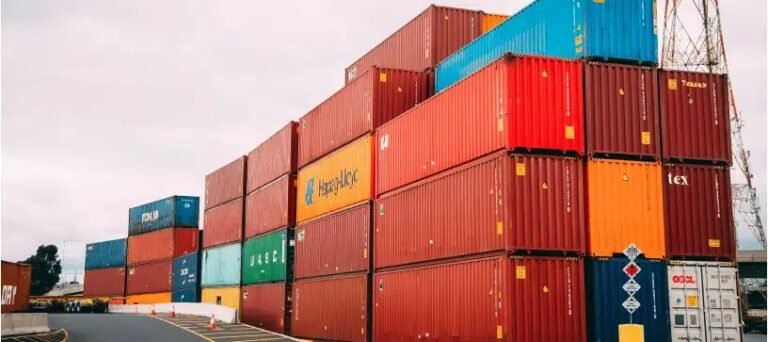Every extra pallet that fits in a container saves you money. But overloading or poor layout can trigger delays, damage, or customs fines.
Smart container loading helps cream charger distributors lower per-unit freight cost, prevent losses, and meet labeling and pallet handling rules in destination ports.

This is your full guide to container planning—based on real 640g, 1350g, and 2000g steel tanks and lightweight 640g aluminum cylinders.
Why Smart Container Loading Lowers Unit Cost and Improves Delivery Safety?
If your factory loads 5% fewer boxes per container than it could, your cost per unit goes up—even before customs or warehouse fees.
Efficient loading isn’t just about fitting more—it’s about shipping smarter: using space, weight, and pallet logic to match transport conditions and reduce risk.
What You Gain with Smarter Loading:
- 📦 More units per container = lower freight cost per bottle
- 📉 Reduced risk of pressure damage from overstacking
- 📄 Easier customs clearance with consistent label/pallet layout
- 🚛 Faster unloading at warehouses or 3PLs
Whether you’re a brand owner, importer, or DDP buyer, this matters directly to your margin.
What’s the Standard Loading Capacity for Steel N2O Tanks (640g / 1350g / 2000g)?
Based on real-world factory data, here’s the reference loading plan for three steel tank sizes:
📦 0.95L / 640g Steel Tank
| Container | Qty (pcs) | Boxes | Pallets | Gross Weight |
| 20FT | 9,072 | 1,512 | 18 | 19,792.08 kg |
| 40FT | 12,096 | 2,016 | 28 | 26,389.44 kg |
📦 2.2L / 1350g Steel Tank
| Container | Qty (pcs) | Boxes | Pallets | Gross Weight |
| 20FT | 4,100 | 2,050 | 22 | 17,015 kg |
| 40FT | 5,200 | 2,600 | 28 | 21,580 kg |
📦 3.3L / 2000g Steel Tank
| Container | Qty (pcs) | Boxes | Pallets | Gross Weight |
| 20FT | 3,200 | 3,200 | 21 | 19,360 kg |
| 40FT | 3,800 | 3,800 | 25 | 22,990 kg |
📌 Tip: Always verify container weight limits and stacking limits with your freight forwarder before confirming final plan.
How Do Aluminum Cream Chargers Maximize Container Space More Efficiently?
Lighter tanks = more units per container. Aluminum 640g tanks weigh just 670g each—less than 1/3 the weight of steel tanks.
📦 0.95L / 640g Aluminum Tank Loading Reference
| Container | Qty (pcs) | Boxes | Pallets | Gross Weight |
| 20FT | 9,072 | 1,512 | 18 | 13,074.6 kg |
| 40FT | 17,280 | 2,856 | 40 | 24,904 kg |
📌 Perfect for retail-focused brands and e-commerce distributors who care about space and weight efficiency.
Palletized vs. Floor Loading: Which Strategy Suits Your Logistics Model?
There’s no single answer. Each strategy fits a specific logistics model.
| Loading Type | Best For | Pros | Cons |
| Palletized | LCL, DDP, 3PL warehouse | Safer stacking, easier unload | Slight space waste per pallet |
| Floor Load | FCL to importer-owned storage | Max volume, no pallet charge | Higher labor cost to unload |
| Half Pallet | FCL to mixed destinations | Medium-efficiency + handling | Needs clear labeling |
📌 For Amazon, bonded warehouses, or delivery to supermarket DCs, choose palletized. For large-volume direct delivery, floor loading saves cost.
How to Choose the Right Container Size Based on Purchase Quantity?
Match your order volume with container type to avoid underfilled or overweight shipments:
| Order Volume | Recommended Option | Notes |
| <5,000 pcs | LCL or Shared FCL (20FT) | May pay per CBM, not weight |
| 5,000–9,000 | Full 20FT container | Ideal for 640g steel or aluminum |
| 9,000–15,000 | Full 40FT container | 640g aluminum or 1350g steel best fit |
| 15,000+ | 40FT HQ + split models | Add SKUs or brands, pre-sorted |
📌 For aluminum, you’ll likely reach weight limit before volume limit. Plan accordingly.
What Mistakes to Avoid When Loading Mixed Flavors or OEM-Specific Orders?
Mixed-SKU orders are common in OEM business. But if not clearly organized, they lead to customs delays, retailer confusion, or warehouse errors.
| Common Mistake | Risk | How to Fix It |
| Mixed SKUs in same pallet | Unpacking confusion, retailer rejects order | Load each flavor/label on its own pallet |
| No outer box labels | Customs delay, mis-scanning | Use large-format stickers with SKU + language code |
| Random pallet stacking | Cannot trace damaged flavor or label batch | Provide pallet layout sheet with top-down photo |
| Flavor/color mix per layer | Warehouse miscounts, distributor complaint | Enforce “one flavor per full layer” packing rule |
📌 Tip: Ask your supplier for a pallet layout photo + label map before shipping. This reduces risk at destination warehouse.
How Packaging Design Impacts Shipping Cost and Loading Safety?
Even minor packaging changes affect how much you can load—and how safely.
| Packaging Spec | Suggested Standard |
| Box size tolerance | ≤±3 mm |
| Outer carton quality | 5-layer corrugated / >350gsm for sea freight |
| Print layout | Label always on side facing outward |
| Pallet shrink wrap | ≥20μm, corner-reinforced |
📌 Not sure if your carton design is stack-safe? Ask your factory for a drop test video or pallet stability photo before production.
Can Loading Photos, Layout Maps and Weights Be Standardized for Each Shipment?
Yes—and we recommend it.
What to request from your supplier:
- Pre-shipment loading photo set
- Pallet count + layout diagram
- Weight breakdown (net/gross)
- SKU breakdown by flavor or language
- Export-compliant outer box labeling
📌 Add this line to your purchase order: “Supplier shall provide loading photos, pallet layout diagram, and label confirmation before shipment.”
📌 Need custom labels, flavor layouts, or dual-language boxes? Explore our cream charger customization options →
How Much Free Space Is Acceptable? (Utilization Thresholds)
Sometimes, less than 100% container utilization is okay—if it avoids overloading or stacking damage.
| Fill Rate | Typical Use Case |
| ≥95% | FCL, stable-size SKUs, bulk OEM |
| 85–95% | Mixed SKUs, flavor split, retail labels |
| ≤85% | LCL, trial orders, oversized cartons |
📌 Always balance space vs. stacking stability vs. customs handling.
Bonus Tool: Estimate Your Container Load Online
Need to estimate how many boxes or tanks fit in your next container?
Try this Container Loading Calculator from SeaRates—free, visual, and supports all international sizes.
Conclusion
Container loading is not just logistics—it’s strategic cost control. Choose the right tank material, match order size to the best container, and work closely with your supplier on pallet layout, flavor mix, and labeling to save money and protect your brand.




